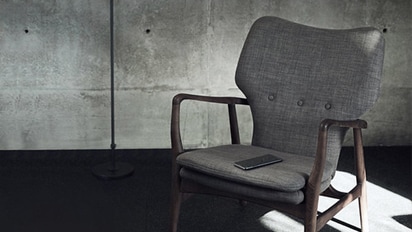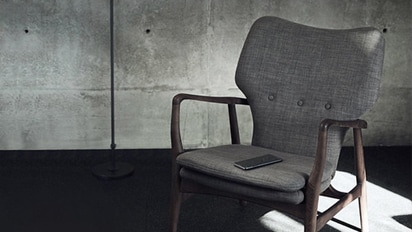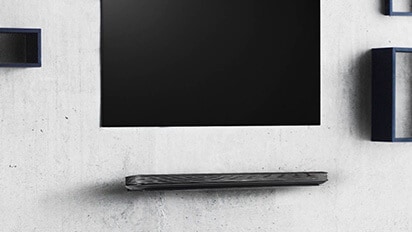[Title]
Installation - Signature Dual Fuel Range
Note: Please read through the instructions in the manual or watch this video in its entirety before attempting installation. Be sure to pause the video when necessary. Use at least 2 people when lifting or moving the range to help prevent damage or injury.
[Narrator]Gas Range installation and services must be performed by an authorized Licensed Installer, Service Agency or Gas Supplier.
For your safety, never handle perform, service, or attempt to install any gas connection or gas lines yourself.
This installation requires both gas and electrical connections before beginning the installation.
Remove all packaging materials that came with your dual fuel range.
The following tools are required:
Flat-Blade and Philips-Head Screwdrivers (big and small)
240 Volt Electrical Power Cord and Stain relief ( 3 or 4 wire hookup)
Power Drill with a 5/32” Concrete Drill Bit
Level
Gloves
Connect the range to the Gas supply Line.
The gas range cooktop is setup for natural gas but can be converted to LP gas if needed.
The LP conversion kit including the required parts and instructions can be found attached to the back of the oven.
The dual fuel range is equipped with both a gas cooktop and electric oven.
The pressure regulator at the back of the range sits at a 45 degree angle.
You may require additional clearance behind the range to accommodate both a 240 volt electrical outlet and a gas supply line to the angled pressure regulator.
Once the range is connected to gas, connect the power cord.
Check the 240 volt outlet in your kitchen to determine whether you need to purchase a 3 wire or a 4 wire power cord.
Electric range connection kits can be purchased at most local home improvement stores.
Check local electrical cords for further information.
If you are renovating or building a new home, have the range electrical outlet installed 6” from the floor and 6” from the right side cabinet.
Pull the range far out enough of the cavity so the range back is accessible and you have enough room
To install the power cord:
Turn off the cower connecting to the oven range outlet.
Power cord instructions can also be found on the back of the range.
If your home was built after 1996, you will probably require the 4 wire electrical connection.
For older homes with a 3 wire connection, steps are the same except for how the terminal block connections are made.
Remove the access panel cover.
Remove the screws from the terminal block.
Take a moment and become familiar with the components inside the terminal block.
- Black
- White
- Red
- Ground
For a 4 wire connection:
Remove the green ground screw form the ground strap located below the center terminal on the terminal block.
Bend the ground strap up and align the hole in the strap with the center screw hole on the terminal block.
Pull the power cord wires up through the connection plate.
Inset the green ground screw into the power cords green ground wire terminal ring and reinsert the screw in the terminal block.
For a 3 wire connection:
Do not remove or preposition the green ground screw and ground strap.
Attach the white (neutral) wire to the center terminal on the terminal block.
Attach the remaining wires to the outer terminals matching he wire color with the wires already on the terminals, red to red, black to black, leaving no gap or slack.
A cord strain relief
Is required to prevent the cord form accidentally being pulled off when the range is moved.
The most common cord relief has two pieces.
Place the piece with the smaller screw holes behind the cord with the angled tab inserted through the hole in the connection plate.
Place the other piece in front of the cord with the angled tab inserted through the hole of the connection plate.
The chord should now be sandwiched between the two halves of the stain relief.
Insert the screws on each side of the strain relief to form a tight clamp to prevent eh chord from sliding.
Be careful not to damage the chord when tightening the strain relief.
Screw the access panel back into place
Install the anti-tip bracket.
The anti-tip bracket, and installation template, and instructions are included with the range.
Determine the final location of the range before attempting to install the bracket.
Place the bracket on the floor with the bracket edge against the rear wall.
If the range does not reach the rear wall, align the back of the bracket with the rear panel of the range in its final location.
The anti-tip bracket must be screwed to the floor or rear wall.
To install onto wood floors, use the screws provided to secure the bracket using the pair of marked holes.
For concrete floor, Use a concrete bit to drill a 5/32” hole 2 inches deep into the concrete at the center of each of the marked holes on the bracket.
Use the screws provided to secure the bracket into the floor.
For rear wall installation, use 2 screws provided to secure the bracket using the pair of marked holes at the LOC-C location.
The screws must enter into a wood sill plate.
If the wall contains any metal studs or similar materials, the floor must be used.
If you prefer have your installer mount the anti-tip bracket as well.
Plug in your unit and turn on the power that connects to your range.
The control panel will illuminate and a tone will sound.
The clock must be set to the correct time of day in order for automatic oven timing functions to work properly.
Press and hold cook time for 3 seconds, CLO will appear, press Plus or Minus to select your desired time.
Press START to accept the change.
Before fully pushing the range fully in, use a wrench to adjust the height o the front and rear legs so that the height of the cook top matches the height of the counter tops.
To raise or lower the legs, turn the legs clockwise or counterclockwise.
Slide the unit into position, and adjust the front legs as necessary to level the unit.
Assemble the surface burners and end caps
Align the spark igniter through the hole of the appropriate size surface burner.
Place the appropriate cap over each surface burner.
Seat the burner caps correctly or you may experience uneven flames and / or poor ignition.
To ignite each burner, turn the knob position to light.
You will hear a clicking sound and the flames will appear.
Ignite each burner to make sure the flames are even all the way around.
If the flames are uneven:
Wear heat resistant gloves while re adjusting the burner caps.
Once the burners are seated, set the grate on the cook top.
Then adjust the oven racks to the desired positions.
Please watch our video on using self-clean for further details and thorough instructions.
[do not use oven cleaners prior to running self-clean]
If there is a gap between the range and the back wall, use the rear filler kit provided.
Using a screw driver, remove the upper 4 screws that attach the rear bracket.
Loose the 2 screws on the side of the bracket
Place the filler on the rear bracket as shown.
Tighten the outer screws and inset the screw that was previously removed at each end of the filler.
With 2 screws left over, set them aside with the instructions for future use.
You are now ready to use your new dual fuel range oven.
Note: If your power cord kit did not include a strain relief, refer to the instructions provide with the power cord to purchase the connect strain relief at your local home improvement store.
-
Turn off the burner and wait for the burners to cool.
Note: When first operating your new dual fuel range oven, you may notice a smoky odor. This is normal and will dissipate over time. To help speed up the process, run a self-clean cycle for a minimum of 2 hour before initial use.
[Logo] LG: Life's Good












